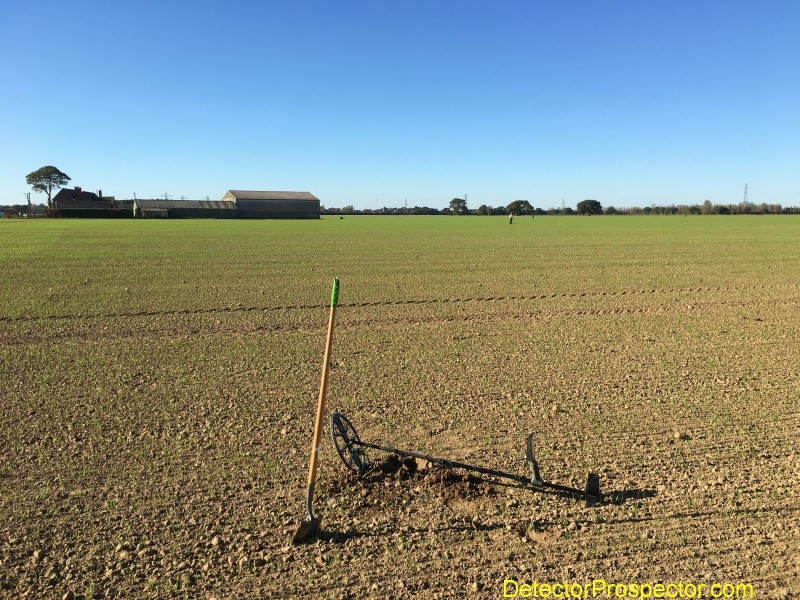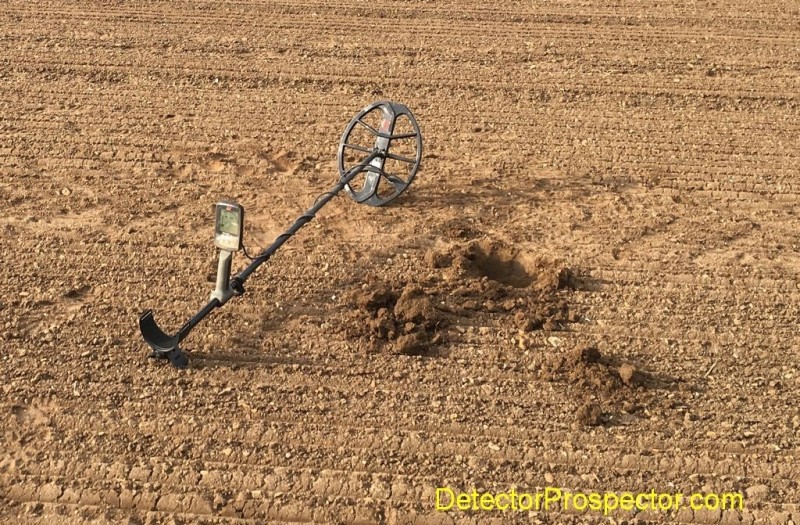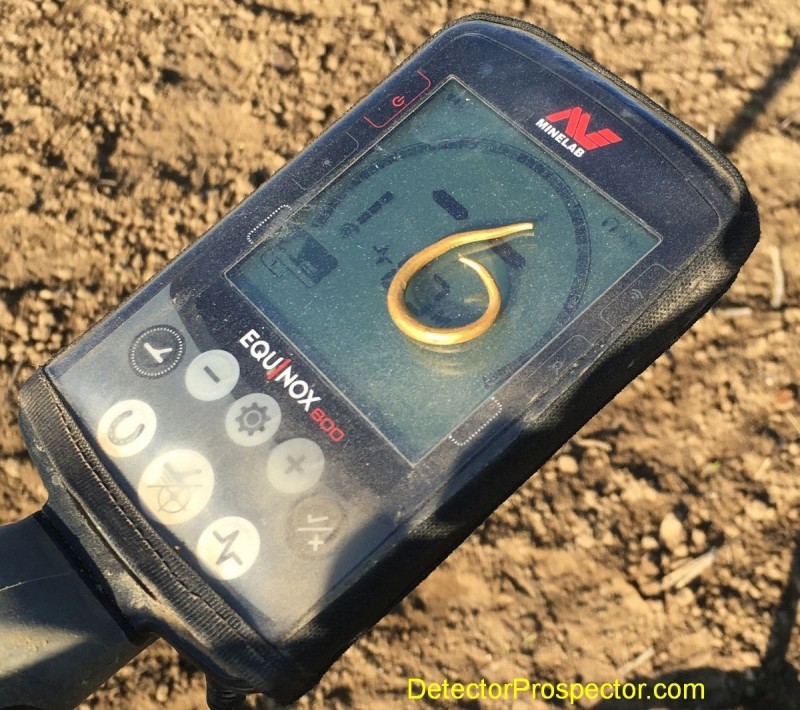Leaderboard
Popular Content
Showing content with the highest reputation on 12/12/2020 in all areas
-
10 points
-
Water is starting to get chilly. 46 Tuesday. I was good for 2 hours and 44 minutes but ran out of time and feet were starting to get chilled. Two gold rings and 5 Silvers. Rare the AQ hits silver but the machine never fails to Amaze me...Hopefully be able to slip out next week, time to switch over to the heavy duty drysuit. AQ settings, in the water hunting, about chest deep, Brackish water...Stock coil...All Metal only....Sensitivity 8.....ATS 5......Volume 9.......Delay 11.....Threshold around 5, very low. Digging deep targets only...only iron was 2 pieces of crab pot. One I knew but dug anyway, the other fooled me.9 points
-
I hit a new spot this afternoon for about 3 hours, scored 3 silver rings and a AA token. Doesn't appear to have been hit by anyone else. It's a trash dump and I only dug from 15 and up on the Nox. I think there's some gold hiding at this place. I was hunting in the area from the old shoreline down to the water. The lake level is way down and the targets are rather shallow and easy to recover. I'm going back Sunday and dig from 0 and up, I'll grid an area and begin cleaning it out.6 points
-
6 points
-
6 points
-
This ain’t much 10k 2.2 grams with fake stones. Weather is changing and I’ve just been busier than I need to be. 49 when I got to the beach with a stupid wind.... hit the water and to me not having been in it ... it was cool. Never seen another person swinging a coil anywhere. So looks like some are waiting for more sun. Dug a couple more trash ring.... and very few targets. You just have to find the targets now and move a littler slower.6 points
-
Found something at Jeffrey Bay this morning that made me laugh.. Whoever the keys belong to: It was no doubt my pleasure!6 points
-
I'm betting that most of you detectorists have found a large number tobacco tags, just as I have. Up here the most prevalent tags are "stars", but from time to time others pop up as well. As a Museum manager I get almost as excited with a tag as a nugget. So, I started a collection of this chewing tobacco advertisement. Most 19th century miners smoked either a pipe, a cigar or chewed. I liked to hear from you guysabout your tag finds, if you care to. I've attached some examples and an ad from the 1890's. Oh, and a little poem from the era: When weary I are, I smokes my cigar. And as the smoke rises, Up into my eyes, I thinks of my true love And Oh, How I sighes!4 points
-
I'm always amazed how gold never gets a sunburn from being exposed for all of that time on the surface.🤣4 points
-
I took the keys to the pub across the road to see if they could find the owner.. the bar staff told me they were claimed last night by an 'old bloke' who was at least 70 years old.. you can never tell, obviously the man is a bit of a stud..2 points
-
Are you using the supplied adapter and confirmed that it is actually supplying charge current? You never mentioned how you confirmed that it was getting an appropriate charge current. Sounds like it is not for some reason, either a bad charging brick, bad charge cable, bad battery (unlikely because it showed 3 bars and powered up the detector) or poor connection at the headphone jack/charge port (most likely) which needs to be threaded on tight. If everything is hooked up correctly and charging, the front panel battery icon should show the unit is charging. BTW, not really a good idea to take lithium ion batteries to parade rest (full discharge) outside of normal usage because the subsequent high current initial charge just puts unnecessary electrical wear and tear on your battery that has a finite (though high) number of full charge discharge cycles available during its service life. Good luck and hope you get it sorted.2 points
-
Congrats on your gold. It is great that you told us your settings. I have an AQ coming in and it hear the setting and performance from others helps in the learning process.2 points
-
That's a problem in many parts of the world. Lying in bed last night I was thinking about my upcoming "Detecting New Year's Resolutions" of expanding my detecting horizons. We have ghost towns, too. (I recall reading the number of USA ghost towns that still exist -- can't remember but something like more than 50,000?) And as you point out, many good detecting sites have disappeared due to development, both residential and commercial. We (i.e. all detectorists) can sit back and lament or go find the juicy sites that remain. 2021 will be as good as we choose to make it.2 points
-
Absolutely not meant as a slam or put-down at all. i started off park hunting, believe me I know the amount of effort and skill (and sometimes just dumb luck) it takes to be successful turf hunting. Tom's very good at deep silver turf detecting, it's a special kind of skill for sure to be able to slice and dice through a sea of modern junk and drill down to the oldies. BUT once I started relic hunting, touching Western history, and finding coins that predated the United States as a country, I was hooked. I love park demos too, but the hunt mindset is more that of relic hunting, and if there's a demo in an old park In San Francisco, you'd be surprised what turns up, cobs (yes you read that right, cobs have been found), reales, busts, large cents, seateds, gold rush era buckles, some great buttons, tokens, and the usual suspects like barbers, mercs, rosies, and jewelry. A good demo is a blast to experience, and I've been fortunate to be able to get in on a few epic park demos. Our history definitely doesn't go back as far as that in the Eastern USA where Tom always tongue-in-cheak jokingly says that every sand box and tot lot are loaded with large cents, but we do have history here, from the early fur-trade and Spanish Mission influence to the gold rush and great railroad expansion, but as California becomes the most populous state in the United States, it's disappearing by the day as it's being turned into a cement jungle. GL&HH, Cal2 points
-
Thank you for all the good deets! And I especially appreciate the link to that write up, that kind of stuff is very helpful and exactly the kind of thing I was hoping to see. AGAIN, I am very interested in what exactly is going on when various settings are adjusted. btw, I meant to say Sens Smooth not Extra... I actually have a personal video of a nugget recovery and after reading Nenads write up, I can hear the detector not having the greatest response which I believe is possibly because of my use of Fast Tracking. I will be playing with these settings next time I get out, especially curious to see how adjusting the threshold like you say might smooth things out and bumping the Gain all the way up for my tune. But I must say, I've been avoiding the DD because I don't want to get too addicted to the quieter, luxury detecting experience it might bring me 😂 I have been detecting this area in a patch hunting style at a quicker pace, mostly expanding it as much as I can out of curiosity of how large of an area I can expect gold to be in before I slow down and really disect it. At least that's what I'm telling myself to feel okay about my horrible technique. I can go low and slow, meticulously. I think my methods right now are simply a product of my excitement of finding a patch with easy gold...2 points
-
Blokes 🤔, pretty sure Krissy is a chick 😂. Great couple they spent several months on my tenements here in WA.2 points
-
Thanks Joe. I’m anxious to see what it can do. I see it can hit tiny bits of metal using 7 delay and has awesome depth especially on iron. Wish I could run half that low of delay in the saltwater. I haven’t tried increasing the sensitivity much beyond the preset level. More time and more manipulation of knobs is what I need. 😆2 points
-
I’m thinking it was about 8 to 10 inches. I was pretty accurate in digging it and really surprised it it’s size in relation to the clear target response. What I’m not used to is how loud the AQ sounds off on coin size objects say... 6 inches deep. With my other machines, that sound would indicate the target is just below the surface. So I take a shallow scoop and it’s still in the ground. Gotta dig deeper the first time around. I’m still real new with this machine so time will tell.2 points
-
Finding the small gold is as impressive as finding the deep gold- congrats!!2 points
-
Nice one Bob!! I swear the "AQ" is Hotter on small gold rings then the bigger one's.. Even though it hits hard on the big ones I think we will see more of the smaller ring because they are more likely to move.2 points
-
Nice digs! That buckle looks like a nice find too. I've yet to find a flying eagle penny, or large cent, they're just not common on the left coast. Those crown tops were used on scent bottles, and possibly fancy glass condiment bottle tops: https://www.google.com/search?q=crown+top+perfume+bottles&safe=off&sxsrf=ALeKk011K6cxrhTelg1nCWnW37NmnN9piA:1607724917585&source=lnms&tbm=isch&sa=X&ved=2ahUKEwj2vu-E-sbtAhUBip4KHfdaCmwQ_AUoAXoECBEQAw&biw=1920&bih=938 GL&HH, Cal2 points
-
What I liked about the book is the emphasis on signal clarity over signal loudness. Really opened my eyes early on to gain/sensitivity control, even more so when I witnessed just how bad my ground would mask small signals as I raised the gain. I could test my ground with a normal Daisy BB and actually hear it break up and disappear as I raised my gain. Real eye opening stuff. Good book to re-read every so often, especially if you have or hunt hot ground. HH Mike2 points
-
oneguy - I'd come out west for silver dollars as well. Most of the guys I know and hunt with have found one or more silvers dollars. More than a few have found a gold coin and couple - more than one. In speaking to my parents and grandparents prior to their passing - silver dollars were in very common usage here in the UTAH area. My grandfather owned a bowling alley and ice cream business. Both very popular. The till was emptied and frequent trips to the bank made with a big heavy bag containing the silver dollars (and other silver). My mom was one of those that had to haul it to the bank. Large transactions of silver dollars would be awkward due to weight, but my parents and their parents all had coin purses or pouches for the silver and other coins. It is common to find coin purse hardware (the frame for the working / opening end that has the snap) while out hunting the ghost towns and such. But I've yet to turn up the hardware and the silver / coins from a lost coin purse. When I was young in the 60's, the little rubberize squeeze coin pouches were popular with the kids for lunch money. But those faded out in 70's and change was eventually just kept in the pocket and bills in the wallet. Many women still have small purses kept inside their larger purse for coins, bills, earrings, credit cards and such. Here's hoping there are plenty more silver dollars and gold coins for us to find. Rich2 points
-
I am primarily a gold prospector but I do enjoy all things metal detecting. The thing is I really like finding gold (or platinum, silver, etc.) so my focus is always on precious metals. That being the case relic hunting has not particularly appealed to me, especially given the laws surrounding finding true artifacts in this country. Many relic hunters are at least technically in violation of federal law if they are recovering items 100 years or older and in many places 50 years or older can get you in trouble. I don't need that kind of problems in my life, and so even though the actual risks involved tend to be overblown, it is not something that excites me. I have the law firmly on my side when prospecting for gold on land open to mineral entry. Eight years ago some friends suggested I might enjoy hunting ancient artifacts and gold in England. The UK has laws regarding the recovery of antiquities that are far superior to ours. They actually support metal detecting and have proven so successful that museums are being overwhelmed by the numbers of exciting finds being made. I always wanted to find a gold coin anyway. My friends suggested the operation that centers around Colchester, England. Colchester is the site of the earliest Roman occupation in England and has history extending far earlier. The Celtic tribes in particular were active in the area, with many Celtic gold coins found by detectorists. The gold coins found span the millenia though including hammered gold coins and milled gold coins of more recent vintage. Just browse the website finds page for an idea of the types of finds made every day in this area. All photos in this story may be clicked or double clicked on for larger versions. Just one field of several at this one location. I could have spent the whole trip here. The hunts are limited to a couple times per year when the farm fields have just been harvested or planted, so Feb-March in the spring and Sept-Oct in the fall. The limited timeframe and limited openings means it is hard to get your foot in the door with this club unless you apply a year or more in advance. 2019 is already filling up and people are booking 2020 now. Long story short I made the trip for two weeks back in 2010 as told at Metal Detecting Ancient Coins at Colchester, UK. I refer you there for more details especially photos of all my finds. The hunt was amazing with finds ranging over a 2000 year span. Finds that would be world class in the U.S. are not only common but considered "new" by comparison to the finds I made almost every day I was in England. Yet I did not score that gold coin. There are many found, but when you consider the number of people hunting 12 hours a day the reality is that you have to be very lucky to get your coil over one, even given a full two weeks. I came away better educated on that reality. It was a fabulous trip but I was in no great rush to return knowing what I learned, plus it rained half the trip, and UK farm field mud is as sticky as it gets. It is far easier to find gold nearer to home and I went back to prospecting and jewelry detecting as my main focus for finding precious metals. Nostalgia does creep up however, and as time passed I thought I should give it another go. I booked a slot with two of the hunt managers, Minnesota Mindy and Chicago Ron, figuring that I had a shot at maybe at least one of them. I had never met Mindy but we knew of each other from Ganes Creek days, and Ron I took a photo of making his first Morini Celtic gold coin (see story above). A year went by and then suddenly Mindy had an opening, which I jumped on immediately. Just a few days later Ron had an opening. I was going to decline, then saw by some miracle his week started when Mindy's ten days ended. I really hate making trips of any magnitude for less than two weeks. This is low odds stuff and the costs also do not justify short hunts in my mind. I booked with Ron also and suddenly had seventeen days in England on my calendar for October 2018. By sheer coincidence it turned out that a forum member unearth (hi Gary!) was booked for Mindy's portion. Field with view of the River Stour I got a ticket with United for $1250 round trip to Heathrow from Reno, NV. It is a pretty easy flight really. Afternoon flight out of Reno to Los Angeles, and then 11 hour overnight flight from LA to London. Overseas flights coach class is more like domestic first class, and if you can sleep on planes you can sleep most of the journey away and wake up in England. My return was the reverse but routed through San Francisco with a longer layover in order to deal with customs on re-entering the U.S. No real issues for those used to navigating large airports. It could be exciting for novices however but just relax and ask for help the minute you have any problems. The trips to a certain degree are like an all inclusive vacation with most everything covered, but may include nights out at English pubs for dinner. I did none of that my first trip so looked forward to seeing a little more local flavor this time around. I must be mellowing with age because it is not all about the hunt these days - I am making more effort to smell the flowers along the way and just enjoy. Accommodations on the trip are in barns that have been converted to apartments, which is why these types of hunts are referred to as "barn hunts" but there are other options. Rooms are normally shared - my room for the first ten days. Art was a great roommate. I got far more lucky with weather this time much to my relief. It makes everything more pleasant for all involved. Groups consist of seven or eight people including the host, who busses the group to different fields each day or twice a day. All morning hunting takes place on one farmers fields. The hunt may continue on that farmers land in the afternoon, or switch to another famers land. The farmers are paid by the number of people on their land each day so for logistical purposes it is one or two landowners per day. The amount of land available is mind-boggling vast. There are fields that have been hunted for the 16 years the club has been in existence, and good finds are still being made. This is part due to the sheer size but also the fact that the famers deep plow and turn the land. Targets that were too deep or on edge get brought up or reoriented, and so areas thought dead come back to life on a regular basis. I proved that myself this trip. New fields are also added on a regular basis for those who like that feeling of being on less hunted ground. I took two Equinox 800s on the trip, one outfitted with the new 15" x 12" coil that arrived just before my departure. This is a fantastic coil, very light for its size, and just the ticket for covering huge areas. There is a depth bonus also on most targets but to me that is just a bonus. That extra 4" coverage per swing is far more important in improving the odds for finds than another inch of depth. I will get more into my settings and how they evolved during the trip as a follow up post. United wants $100 for a second bag, and I was able to bring two complete Equinox and everything I needed for three weeks on the road in a single 40 lb bag plus small satchel carry on. Nice! I could drag this out as a blow by blow accounting of each day but let's cut to the chase. Just a couple days into the hunt one of our group found a Celtic gold coin, always a good sign. Five days into the hunt Gary (unearth) scores part of a medieval gold ring with a red stone, possibly a ruby. A great find and Gary was very pleased to find gold - who would not be? Congratulations Gary! I and the others were finding various old coins and artifacts similar to what you would see in my story from 2010 - lead seals, hammered silver coins, watch winders, buttons galore, musket balls, etc. Gary scores gold and a gemstone - jewelry finds are very rare October 16 dawned nice and sunny, and we went to hunt some of the older ground in the club and so few people want to hunt there. Yet I was immediately busy digging "gold range" targets with my focus being on target id numbers from 7 on up. I will explain the reasoning there later. I made a few passes back and forth digging all manner of small lead bits when I got a nice little 7-8 reading no different from hundreds already dug in the last few days. I turned over a spade full of dirt, and out popped an oddly shaped piece of gold! Celtic "Votive Offering" fresh out of the ground! I knew it was gold but I was not sure what it was. It looked like a small torc, normally a band worn around the arm or neck. This was too small, maybe 5-6 inches long, so it would barely loop around a wrist enough to stay put. More like the size of a ring really. Whatever it was I knew it was great and my emotions soared sky high. I reached in my pocket for my iPhone to take a picture.... and had an emotional crash. My phone was gone! I went from elation to panic almost instantly. I left the find and detector where they were, and proceeded to backtrack my trail. I had not gone far and the ground was rolled flat, so I determined I must have left the phone in the van with Mindy. So I got on the radio and announced my find of a "mini-torc" and explained I had lost my phone. New Minelab Equinox 15" x 12" coil helps make once in a lifetime find Mindy was excited and said she would be right there. She did indeed have my phone, so we rushed back and took photos of the find. Everyone gets excited when gold is found and this time was no different. Now that I had my phone I got excited all over again, quite the rollercoaster! Happy guy! Photo courtesy of Mindy Desens Celtic gold, the find of a lifetime for sure. Many of the Celtic gold coins found here date from around 50 BC to 25 BC and so it is reasonable to think this find is of similar age, though that cannot be determined for sure without further testing. Gold dropped around 2100 years ago - simply amazing! Equinox and Celtic gold! The find has since been labeled as a gold "votive offering". The ancients lived for the harvest, and offerings were made to the gods in the form of gold tossed into the field to insure a good harvest. At least that is the theory that tries to explain why nearly all the farming land seems to have at least a few Celtic gold items found in them eventually. The truth is nobody really knows for sure as there are no written records from that time. For all we really know this might be an ancient gold hoop earring! That's half the fun, imagining what this stuff is and why it is where it is. The club has been hunting these fields for around 16 years, and while many Celtic gold coins have been found this is the first item of it's type, making it a particularly rare and satisfying find. It is really hard to get my head around the fact that somebody last held this gold over 2000 years ago. Celtic gold "votive offering" closeup All gold or silver that is not a coin is immediately declared as treasure to the museums. I actually got to handle the find very little before it was whisked away to a safe. The museums will evaluate it, and possibly bid on it. High bidding museum gets the find, and the money would be split between me and the property owner. If the museums decline, I will pay the property owner one half the value and eventually get it back. This normally takes about a year but can take two or more years depending on the backlog. Every item found that the finder wishes to keep must go through this process, and there are only so many experts who can identify and catalog all this stuff. I live for the hunt and the photos. It's not like I haul gold around to show off to people - it all resides in a safe deposit box. So for me the only real value is in making that adrenaline rush happen and then having photos I can easily share with others. I won't mind therefore if it sells at auction and I get half the cash. Clean and easy. If I get the opportunity to get it back however I may very well have my find fashioned into a ring. There are not many people in the world who can claim to be wearing jewelry fashioned before Christ was born. I could sell it myself no doubt for over twice whatever I pay for it, but I don't need the bucks that bad to part with such a find. Celtic gold details - actual age unknown but BC, around 25 to 50 BC if in range of coins found in area The Equinox with 15" x 12" coil did a good job making this discovery. As a classic open ended "broken ring" type signal it was reading 7-8 and was detectable to only about 4-5 inches in air tests. I am guessing it was about 4 inches deep. The Equinox is exceptionally hot on gold and while you can never say for sure it is very possible that this gold item was left in this heavily hunted area because it is such a poor signal on most detectors. Needless to say I am very happy with both my Equinox and the new 15" x 12" coil. It is the perfect coil for this type of large field detecting. Speaking of Equinox I was surprised at how many were already in use with this random cross section of hunters from around the U.S. About three-quarters of the hunters were swinging the Equinox, most having switched from the Deus or CTX 3030. Other than the typical minor quibbles people were unanimous in liking the machine and there was constant talk about how well it was performing. The Equinox really loves round items in particular, and people were reporting noticeable increases both in depth and target id accuracy at depth. Ferrous identification is almost 100% accurate under these conditions. I dug only one ferrous item in nearly three weeks that just clearly fooled me, a very deeply corroded steel spike of some sort. There were a handful of other ferrous targets I dug that I figured were ferrous but were borderline enough I figured "just dig it". Better safe than sorry, but in each case they were the expected ferrous items. Lots of Minelab Equinox plus a Deus and CTX The next day we were back in the same general area. There was one small plot Mindy wanted to hunt and nobody else was interested, so I decided to hunt with her. I was at one end of the field and Mindy the other. I was hunting fast, trying to cover area, when I got one of those showstopper signals and dug a nice 1737 George II milled silver sixpence. I had no idea what it was - kind of looked like a Roman emperor to me and so Mindy had to take a look. I found I was best off not speculating on finds as I was usually wrong though I am learning. The "George" I know now is a dead giveaway that this is a "recent" vintage coin. A real beauty though and I was quite pleased with it. 1737 George II milled silver sixpence It was only 15 minutes later that Mindy calls out on the radio that she found a full Celtic stater, the larger of the Celtic gold coins. It was her twelfth gold coin find on these hunts over the years, and a real beauty at that. I am one of those people who get nearly as excited as the finder when a great find is made - I love seeing people do well detecting - and this was very thrilling to witness. Although I was in no position to complain this was exactly the sort of find I had hoped to make myself, and it is nice to know these targets still remain. I had walked maybe ten feet past the coin as I headed for the far end of the field. Just a stunning coin, and looked almost brand new even though it had been in the ground for around 2100 years. Gold is just amazing in that regard, whether nuggets, jewelry, or coins, they pop out of the ground like they were dropped yesterday. Mindy scores a Celtic gold stater - her 12th gold coin 45 BC to 25 BC Addedomarus - Trinovantian tribe 5.58 g.16.90 mm Can you imagine, twelve gold coin finds, including a hammered gold noble, some sovereigns, and Celtic gold? Mindy is amazing. Here I am looking for my first gold coin and she gets her twelfth - now you know why this hunt attracts people. The next day we were hunting some of the newer, less hunted ground, but after some high speed scanning I wandered off to an area that has been hunted a lot before because two gold sovereigns had been found there recently. There are areas where there are lots of targets, and also vast stretches of fields where targets are few and far between. People tend to like the idea of new fields, but they often have very few targets to dig. I kind of prefer older target rich zones that have prior gold history because even after years of hunting I have no problem digging lots of gold range targets in these locations. This does usually mean lead but I am happy to dig lead targets all day as opposed to being in an area where there are only targets once every 15 minutes or more. This was one of those locations, and I was in gold hunt mode digging lots of tiny signals in the 7-10 range with 9 being particularly prevalent. This almost always is an oblong little bit of lead, but I dug another nice 9 signal and up popped a large gold flake! It was not much different than something I might find gold prospecting, but is either a fragment of a hammered gold coin that has been worn to oblivion or maybe a portion of a blank gold sheet. I don't know but it was my second gold find in three days and so very nice to see. Just making one gold find is exceptional, and two in a week is harder yet. The flake only weighs 1.03 grams and is 15.05 mm long and 0.80 mm thick. Truly just a flake of gold, and another testament to the gold ability of the Equinox even when running the larger coil. I was pleased with the find as much from a technical aspect as anything else, since I have already found countless similar flakes of gold while prospecting. I went all the way to England to find a flake of gold! It finally came time to say goodbye to Mindy and the group and get handed off to the new group incoming with Chicago Ron. Ron is an incredible hunter with a real nose for making finds. I really enjoyed watching him - an artist at work. In fact there are many people on these hunts that are amazing detectorists (Scott and Scott, and Mike, I'm looking at you) and there is always something to learn by observing good detectorists in action. What makes Ron special is he just wanders around in an apparently random fashion, yet consistently wanders into some really great finds. He has one of the best noses for detecting I have ever seen. My luck dropped off in this final week but no complaining here - nobody would sympathize anyway! I had my trip in the bag and was more relaxed and I was admittedly cherry picking a lot more now, focusing on the gold range and round targets. Most people are hunting hard for hammered silver coins, but for me those were more accidental bycatch. I just hunt for gold and let the rest happen. I had the chance to eat out a few times with Ron's group and enjoyed seeing more of the local flavor than I did on my first trip to the U.K. There was a dinner night out with Mindy's group (I bought dinner and drinks for all celebrating my find) that was a good time. I just love the English people and these nights out gave me more chance to interact with them. I even took time out from a hunt to go shopping in town with Mindy just to see the town of Manningtree close up. Again, one of the benefits of making a great find - the pressure was off and I did not get so crazy about just detecting. Manningtree, England One pub in particular out with Ron and company was directly across the street from where the captain of the Mayflower lived. The history everywhere you look is just stunning. Ron like nearly everyone in his group is was swinging an Equinox, and early on one day of the hunt he made a find that is rarer than the gold coins - a huge 1653 Commonwealth hammered silver half crown (30 pence). This is one of the few English coins with no king on the front because England was a Commonwealth without a king for a brief period of years. How this 14.39 gram silver coin was still sitting in the middle of a hunted area is a mystery, but as we all know if you do not get the coil right over the spot finds get missed. The coin is 34.66 mm or 1.36 inches in diameter and 2.0 mm thick. I got a great photo of Ron with his first Morini Celtic gold on my last trip, and here he is again doing his magic. What fun! Chicago Ron and 1653 Commonwealth hammered silver half crown Ron's 1653 Commonwealth hammered silver half crown I added to my collection of hammered silver, 1700 and 1800 copper coins, and milled silver coins with the remaining time I had. I tended to wander off in oddball directions away from the group, doing the "go big or go home" thing by hoping to get into some little corner or hotspot overlooked by others. Given the size of these fields there are limitless opportunities for this sort of wandering, and it often means fewer finds. It is however how spectacular finds like a horde happen so I do enjoy giving it a go. It ultimately is my favorite type of detecting, being alone in some place wandering around doing my own thing. Gridding target rich zones is probably more productive, but it has a mechanical work aspect to it. Wandering is more freestyle and also more conducive to the sort of meditative mental state I achieve while metal detecting. I am one of those types that lives in my head and some of my best thinking is done while wandering around detecting. I get so into "the zone" that hours flash by in apparent minutes. Whether I make finds or not I find metal detecting to be wonderfully refreshing. For me at least there are few things more relaxing than metal detecting. The trip ended with a spectacular bang by another new Equinox owner who recently joined the forum. Tim was kind of frustrated with the Equinox when I met him, but I did what I could to help him gain confidence in his detector, and the finds started coming. The very last day he made a find that exceeded my own in some ways, but that is his tale to tell so I will leave it for now. It was so awesome again to be around when a major find was made, and come to find I had walked about 30 feet away from it the previous week. Miss it by a foot or a mile, and you miss it. Usually you never know what you miss, but in this case I got to find out. It may be hard for people to believe but I am happier that Tim made the find than me. I am getting a bit jaded these days whereas Tim nearly fainted from the excitement. I get a real charge out of seeing that in people and Tim is just a really nice fellow. He really worked hard for that find and it was an awesome way to have the adventure come to a close. I am sure we will hear the details about Tim's amazing find very soon. I could not be happier with my 2018 UK adventure. The weather this time was really great. I actually got a farmers tan while in England! Mindy and Ron and his wife Gretchen are all great, doing everything they can to insure people have a good time. The folks I got to visit with in both groups came from all over the country, and I could not ask to meet a nicer and more upbeat bunch of people. I really am going to have to give this another go because I finally came home without that gold coin. Even that is ok because what I did find is even rarer, and I made two gold finds on the trip. Eight years ago I went home with a pouch full of great stuff, but I think my pride was a bit wounded that I had found no gold. I am supposed to be the "gold guy"! I am constantly competing with myself at some level, and this trip really left a warm glow. Again, my thanks to all involved for making this one of the best experiences in my now very long detecting career. Just awesome!! ~ Steve Herschbach Copyright © 2018 Herschbach Enterprises Many more details and pictures later in this thread plus the settings I used so do follow along ! Here is a partial selection of some of the finds I made on this trip. I won't be able to post a complete listing until I get the museum documents back - may be a year or more from now! A few finds made by Steve Herschbach in England, 20181 point
-
1 point
-
That key is a awesome find with history you can track down. I would rather find that then even a Barber half.The great variety in what we find when metal detecting is the spice that makes it even more fun.1 point
-
"They turn on but do not detect any metal. Is it the electrolytic capacitor, the flat pack The IC or is it in the coil itself that is the problem? Is that long rod a radio frequency coil?" I only have experience of the standard ProPointer, so can't comment specifically about the AT. But ... It's not the big electrolytic, it's not the microprocessor, it's not the coil. Most problems are related to the environmental factors. It's got water ingress. It's got condensation inside. It's got dirt inside. The physical beating it takes has caused a fault, such as a broken wire to the coil. I presume you've opened it up ? Look for corrosion, dirt, water staining. I would expect it to have conformal coating ( a varnish like laquer) on most of the PCB, but it's not applied everywhere. Clean it with a brush, a wet Q-tip etc, put it somewhere warm for a day to dry out. Inspect it under a lens/loupe/magnifying glass.1 point
-
Obviously it must be a design fault as so many folks have reported this problem,but must admit i have never had any issues with any coil lugs snapping in all the decades that i have been detecting.Currently still own and use 50 coils in my collection and non have ever cracked but i will admit that after hearing about this Equinox coil lug issue i did invest in a coil lug strengthener from Ebay. The only coil i thought i would have issues with but never did was the stock coil on my original T2,rather than tightening the coil bolts up really tight and possibly bending the lugs in and stressing them i usually add a small spacer and pack the rubbers out so they dont bend it.1 point
-
1 point
-
Absolutely, these are the kind of places with lots of low and mid conductors, most of which are munitions casings from rim fires to modern, lead from the same eras, bits and bobs, etc., but when you work out a nice high conductor in the midst of the iron, it stops you in your tracks.1 point
-
I found almost all my silver in pounded spots so you have to know how to work the trash as best you can. The spots that Cal likes to hunt make it so much more exciting and I have hunted a few.I like the spots when almost any conductive signal has a chance of being a great find when compared to parks that produces mostly junk.Almost all the Jesuit rings I found were like a nickel hit without 1 pull tab found in this secluded field.1 point
-
a better videowith quality that you could actually read something..1 point
-
Flying eagles are very tough to find.I can't remember the last time I found one. Good going.1 point
-
1 point
-
Nice job. You are on a streak.... no pressure😄 Were you able to get an idea of how deep it was? I'm thinking there are probably more small rings left than big honkers. The really big ones are probably deep, hopefully out of reach of other machines. All the bigger new drops that are shallower, are being found by the competition. I went out yesterday to a small beach and had 3 other detectorists there already.1 point
-
Gary my friend, great to hear from you as well, and I hope the digger of that sassy nugget finds many more! All the best, Lanny1 point
-
1 point
-
Restoration is common among pipe collectors and a lot of satisfying fun. Mostly done on wooden bowls but also old clays. That style is called a Straight Dutch.1 point
-
That is a neat find. Do you estimate 18th century or early 19th activity at that site? I suspect it is made of fired clay and would have had a wooden tenon fitted with a Cherrywood or reed stem. This suggest a "better quality" pipe than the more common all clay Tavern type pipe. You could restore it fairly easily for display. You could actually place it in the hot ash of a wood fire to rejuvenate it and it would come out clean and snow white just as it was when made.1 point
-
Yes, but these were implemented by returning the detector to the factory for the upgrade, right? There have also been reports here of First Texas upgrading the Teknetics Omega 8000 to the 8500 for free when in for repair for other reasons.1 point
-
Definitely western US for gold coins and that's partly because the folks headed from east to west didn't care to pack heavy bulky silver dollars but lighter higher value gold coins instead. I was reffering to silver dollars in my previous post not gold coins....1 point
-
This was my first multiple gold day since my 7 gold ring day in July. Both the earring and cross are 10K. The cross has 120 small diamonds on it. Sure makes it shinny in the sunlight. The bracelet is SS and is a 2020 Graduation bracelet. Other earring is a junker. I used my Equinox today. Impulse AQ has been sent back to First Texas again. ☹️1 point
-
I agree that over the entire country they weren't popular. The 'Wild West' contained a different breed in the 19th Century and apparently that carried over into the 20th Century. (See Tom_in_CA's post.) Want to find gold coins? Are you better off searching in the Eastern USA or the Western USA? Back then the population in the East completely dwarfed the West. Now California is the most populous state and many Western cities like Seattle, Phoenix, Las Vegas, Denver, Dallas Fort Worth, Houston, Austin,... are among the largest, and I didn't mention a single California city. If I want to find old paper money I'll stick to East of the Mississippi. If I want to maximize my chances of finding gold coins and silver dollars I'm headed West (after the pandemic's over, so you Western USA guys have several more months before you're threatened ).1 point
-
Thanks, and I was concerned that the Barber wouldn't clean up well, but as I slowly pick off the dirt the silver beneath is fine. I have a bit more picking to do, but I suspect it could grade out as a VF40-45 once completed 👍 No they weren't my best finds this year, I actually had an epic hunt back in February before covid shut everything down:1 point
-
Here's a detailed article about the finder (this was linked in the newspaper article Jason linked): https://www.outsideonline.com/2419429/forrest-fenn-treasure-jack-stuef Even better, an account written by the finder (a professional journalist) previously published online anonymously (linked in the outsideonline article): https://thefinder.medium.com/a-remembrance-of-forrest-fenn-1be2a8646ff2 Lawsuits? Now all those irrational people who blame Fenn for the deaths of searchers will have a field day going after the treasure finder.1 point
-
Hey FS, No! Those were from Harbor Freight! Fiber washers in one of those multi washer kits! I use the kit for all kinds of stuff! About 6 dollars for about 80 various size's and compounds of washers!👍👍1 point
-
With all the damage the many good explorer hunters did in my area to the silver turf population it shows me that the Nox is at or near the top of the class for silver coins.This is all from hard hit spots with about 15 from the water.My friend who just switched from the explorer to the nox(this year) is at 48 and he has won the title for most silver in a year many times.He has the best 2 silver coins with a barber half and a seated quarter .I did manage 3 walker halves and a 1894-o barber dime.I agree with people when they say if they could only use 1 machine that they would pick the nox. I am at a 102 so maybe I can focus on some turf gold since I only have 1 for the year and the only reason I dug it was because it was a nickle hit next to a wheat penny I just dug.1 point
-
On Sunday 25th March I returned to one of my permissions where I have found Roman bronze coins in the past few weeks using my Equinox and on this occasion I ended up with 24 and one of them was a large silver but badly mangled most of the bronzies are 10mm - 14mm across. The Roman bronze coins are on the small size and are difficult to locate even though this field is low in mineralization it has quite a lot of small iron about which is typical of sites of past Roman occupation and this was my 4th 8 hour session on my Roman fields using my Equinox since I got it almost 6 weeks ago. As I always do I "Noise Cancel" and use "Manual Ground Balance" with "Recovery Speed 3" and "Iron Bias 3" and if the field is quiet I try to keep the "Sensitivity at 20 - 22", over the previous weeks I have used different settings but found these to be most beneficial for getting the maximum depth and more Roman coins.1 point
-
Finally.... Here are the settings with an explanation of my rationale for using them... EQUINOX and a visit to the UK February 04, 2019 03:57pm I made my first visit to the U.K. in 2010 in search of Celtic gold. I attended a Minelab conference just prior to that visit and was asked what detector I was going to use. A Minelab was not on my list. Why? At that time, Minelab was synonymous for “low and slow” detecting, with slow being the main problem. The farm fields I was to hunt in England were huge, and in my mind, ground coverage was paramount. I wanted a detector that I could swing fast all day long, something light in weight and with a fast recovery time. Fast forward to 2018 and a return trip to England for another go at those huge farm fields and Celtic gold. This time I was packing two Minelab Equinox detectors, one with the stock 11” DD coil, and the other with the new 15” x 12” DD coil. My first trip had not produced the Celtic gold I was seeking, and this time I was going all in with the Minelab Equinox in the hope that it would do the trick for me. How does a person determine what settings to use on a detector when going to a totally new location, one where both the soil conditions and trash/treasure mix are unfamiliar? It appears that most people seek settings on the internet that serve as a starting point at least. This is certainly one approach and one that can work well lacking any other way to go. I personally rely on my detector telling me what settings it wants to use. Rather than tell it what to do, I listen to what the detector is telling me and go from there. I do this by seeking to balance two different aspects of the detector that matter most to me. First, there is the amount of noise or chatter I want the detector to generate in response to the ground. The number one choice I need to make up front is in determining what Field Mode I wish to use, i.e. Park Mode, Field Mode, Beach Mode, or Gold Mode. In general, I would rate the modes going from “hottest” to “most well behaved” as follows: Gold Mode Park & Field Mode 2 Park & Field Mode 1 Beach Mode 1 Beach Mode 2 The Gold Modes on the Equinox 800 (not available of Equinox 600) are the most powerful modes, but also the hardest modes to tame. Beach Mode 2 on the other hand is designed to deal with both saltwater and mineralized soil, which in turn means it is a very well behaved mode. It also is the least powerful mode in terms of its ability to find small low conductive targets. Choosing the proper mode is a matter of balancing how sensitive you want the Equinox to be to the very smallest and very deepest targets against undesirable characteristics like ground noise, electrical interference, and sensitivity to small trash items. I was going to be detecting large fields in England, and so my focus went immediately to the Park and Field modes. Gold Mode was likely to be too noisy and require too much target analysis for efficient hunting. Beach modes on the other hand are best reserved for the worst ground conditions. Park Mode 1 and Field Mode 1 Multi-IQ processes a lower frequency weighting of the multi-frequency signal, as well as using algorithms that maximize ground balancing for soil, to achieve the best signal to noise ratio. Park Mode 2 and Field Mode 2 are using a higher frequency “weighting” that makes those two modes more sensitive overall and in particular on smaller low conductor targets. It also means that Park 2 and Field 2 tend to have more inherent ground response, which in turn makes those two modes a little more prone to background chatter. I did some brief experimenting and determined that Park 1 had all the sensitivity to small items I could wish for while being smoother/less noisy than the Park 2 and Field 2 alternatives. As far as choosing between Park 1 or Field 1 there is in my opinion no discernible difference between Park 1 and Field 1 except for those inherent in the differing presets. The same goes for Park 2 and Field 2 – once differences in the presets are accounted for, to me they are as near to being the same as to not. Once in Park 1 it was a matter of getting the sensitivity and recovery speed to where I wanted them. In general, I try not to stray too far from the presets unless there is a very good reason. I experimented with the ground balance, recovery speed, and iron bias settings. I could not convince myself that manually setting the ground balance was any better than using the factory default, and so I went with the factory default. In theory lower recovery speed and lower iron bias will both add sensitivity and better define targets audibly, but again the factory defaults worked well. My goal was not to create a detector that was operating at its most powerful. In order for this to work, I have to slow way down to accommodate things like a slower recovery speed and analyze lots of weak signals. No, my desire was not to create a super powerful detector, but an efficient detector for covering large areas. This means setting the detector up to give the best signal possible on desired targets, while reducing unwanted signals and interference. The one item that required the most experimentation and thought was where to set the discrimination control. I solved this by digging all non-ferrous targets (target id 1 and higher) for the first day and a half. For U.K. purposes, I decided the discrimination control is mostly a size and roundness filter. Target id 1 did turn up some coke, a hard, shiny coal like material. Target id 1 though 6 in general produced all manner of very small metal targets, mostly lead and small copper bits, but also occasional aluminum bits. What was interesting was that items of equal size produced very different target id results depending on how round the item was. This is most apparent on hammered silver coins. These coins come in all sizes, and many were cut into halves or quarters to “make change”. A pie shaped quarter hammered will produce a lower target id number than an identically sized but round coin. This “roundness bonus” can easily add five to ten target id numbers to targets, moving items that would normally read in the single digits into double-digit target id numbers. I rapidly determined that digging target id number 6 and lower produced vastly larger amounts of small lead and copper targets with the most common possible good target being a quarter or an eighth of a thin silver coin. There are other small possible good targets that could be recovered in this range, including small gold targets. My time was not unlimited however, and so I decided that I would notch out target id numbers 1 though 6 and only accept 7 and above. This was to be my normal setting for most of my field detecting. However, I also like to hear everything a lot of the time. That includes even the ferrous response, because very often I am looking for places with increased target density, and ferrous indications can reveal an old habitation site worth paying attention to. Switching to all metal response is as easy as hitting the “horseshoe” button, so that when desired I could bring target id 1 – 6 back into the equation, along with all ferrous responses. I prefer most of the time to hunt in 50 tones. However, I did go into the advanced tone settings, and lowered the T1 ferrous tone from 12 to 4 to make the ferrous responses as quiet as possible but still audible to my ear. It is impossible to adjust the non-ferrous tone volumes independently while in 50-tone mode, but the T1 ferrous tone volume can be set as desired. To sum up, my settings were the Park 1 defaults with a couple modifications: Park 1 Frequency Multi Noise Cancel 0 (adjust as needed) Ground Balance Manual, 0 Volume Adjust 20 (adjust as needed) Tone Volume 12, 25, 25, 25, 25 (Steve 4, 25) Threshold Level 0 Threshold Pitch 4 Target Tone 5 (Steve 50) Tone Pitch 1, 6, 12, 18, 25 Reject –9 to 1 and Accept 2 to 40 (Steve Reject -9 to 6 and Accept 7 to 40) Tone Break 0, 10, 20, 30 Recovery Speed 5 Iron Bias 6 Sensitivity 20 (Steve 22 to 25) Backlight Off I generally hunted with target ID 1 through 6 eliminated, but often opened it back up in areas with sparse targets, or for areas where I just “had a feeling” and wanted to sample the lower target id range. My main goal was Celtic gold, and tests I performed on a few Celtic gold quarter staters (a small gold coin) gave readings as low as target id 9 but most in the “nickel range” of 12 – 13. A full stater tested out at a solid 20 – 21 reading. I was not worried about missing gold coins or any coins for that matter that were fully round in shape by accepting target id 7 and higher but I was passing on piles of very small and hard to find targets. This is purely a gamble and a judgment call on the part of the operator. In any circumstances where time is unlimited I advocate digging either all targets, or at a minimum all non-ferrous targets. The problem always revolves around limited time and how many targets a person can afford to dig in a limited period. In other words, I am not presenting these as my “magic settings” for the U.K. and in fact, this is just the opposite. I hope that by explaining my rationale for the settings I chose and why I chose them, that you will see that settings are very much an individual preference. What are technically the “best” settings from a pure performance standpoint may not be the best settings for a person with a bad back, for instance. We all have differing physical limitations and differing ability to dig large amounts of trash without becoming discouraged. The controls on our detectors allow us to adjust not just for maximum performance but also for maximum fun, and we all have to determine for ourselves where the lines are drawn, especially as regards discrimination settings. Halfway into my trip I got a nice little 7-8 reading, at the lower end of my discrimination range. There was nothing special to indicate that this was not yet another small piece of lead, and so you might imagine my shock when an oddball piece of gold popped out of the ground. It was gold all right, but not the Celtic gold coin I was half expecting. Instead, it appears I found a much rarer item, a possible “votive offering” to the gods for a good harvest. This open-ended 6.8 grams of gold gave a weaker signal than one might expect, because it is not round and responds more like a gold ring with a broken solder point. My settings were still good enough to make the find, but if the weight had been less or the shape a little different I may have missed it. In the end, I made the right call, and my faith in the Minelab Equinox was rewarded with Celtic gold! To sum up, these settings are a good set of well-behaved settings for an Equinox beginner in the U.K. The settings minimize noise and reduce the digging of hard to locate smaller items in favor of more substantial targets. Yet these setting will find plenty of very small items also. I offer them merely as a starting point, to be adjusted as the operator sees fit to find their own preferred settings. When in doubt hit that horseshoe button to hear all targets. This works well to better define targets reading ten or lower or any “iffy” targets that seem to have a ferrous component. Such are the risks and rewards of metal detecting. At the end of the day, it is up to each of us to decide where to draw the line between trying to dig all metal in the ground versus our available time and physical limitations. I hope this article helped clarify how at least one detectorist makes those choices in order to help you make yours. Happy Hunting!1 point

.thumb.jpg.d71314a45f3dc82bf75ac1b96e7e9201.jpg)
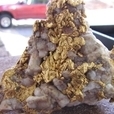
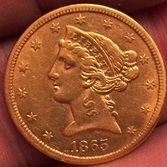
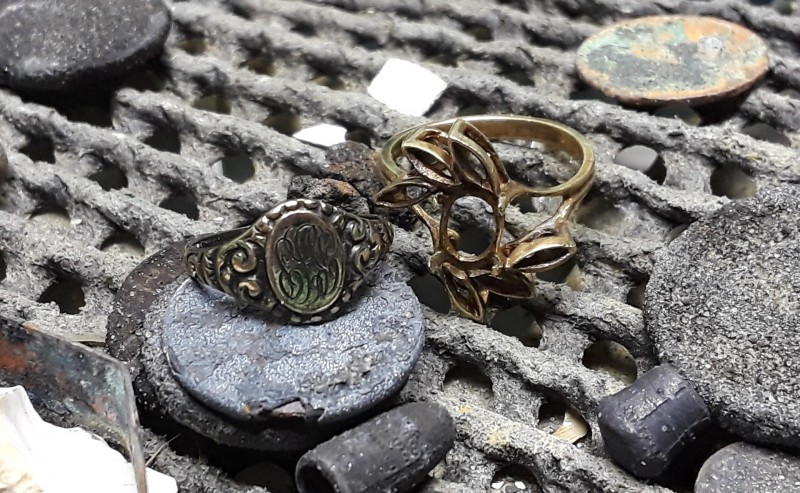
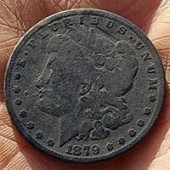
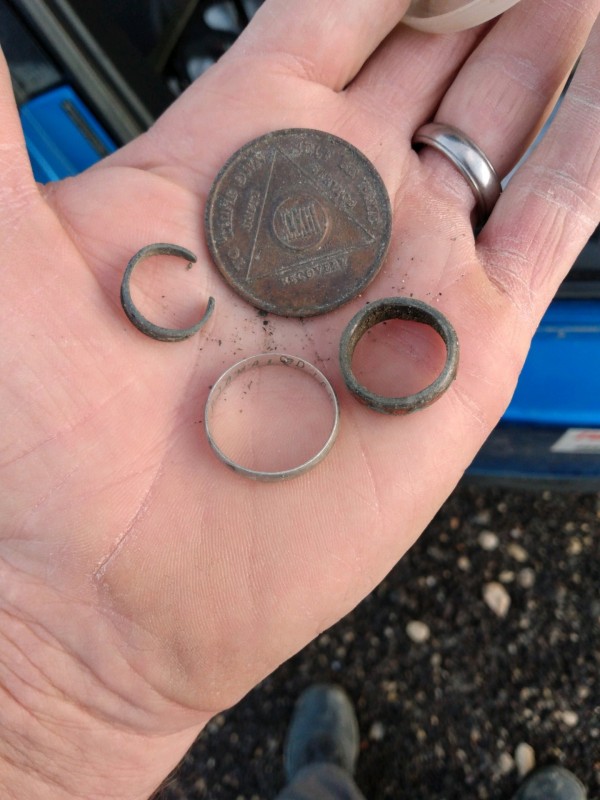
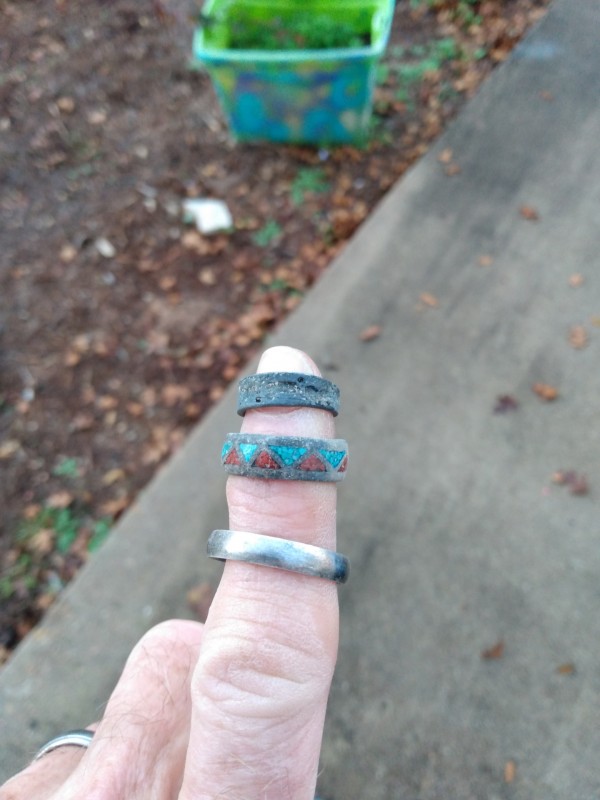

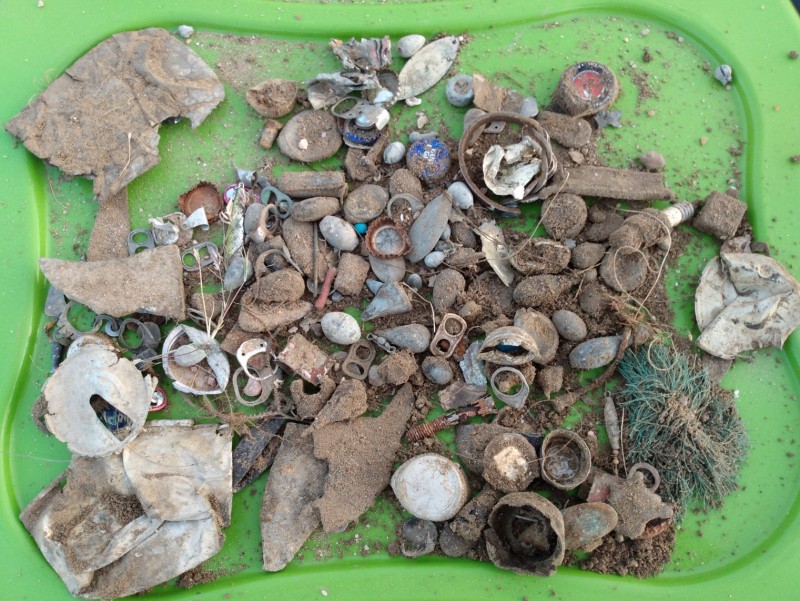
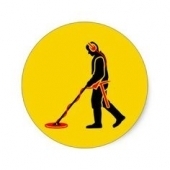
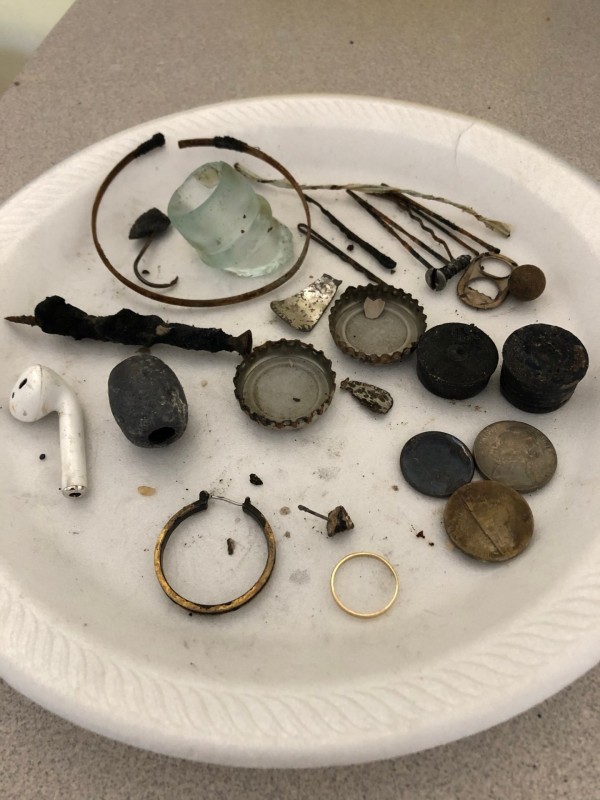
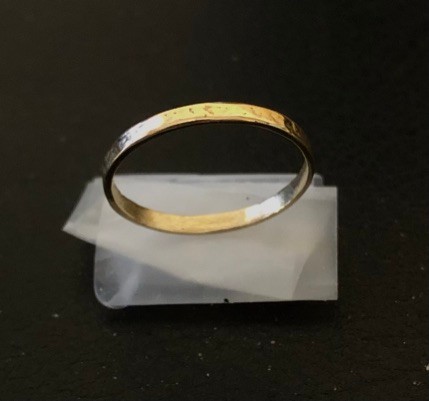

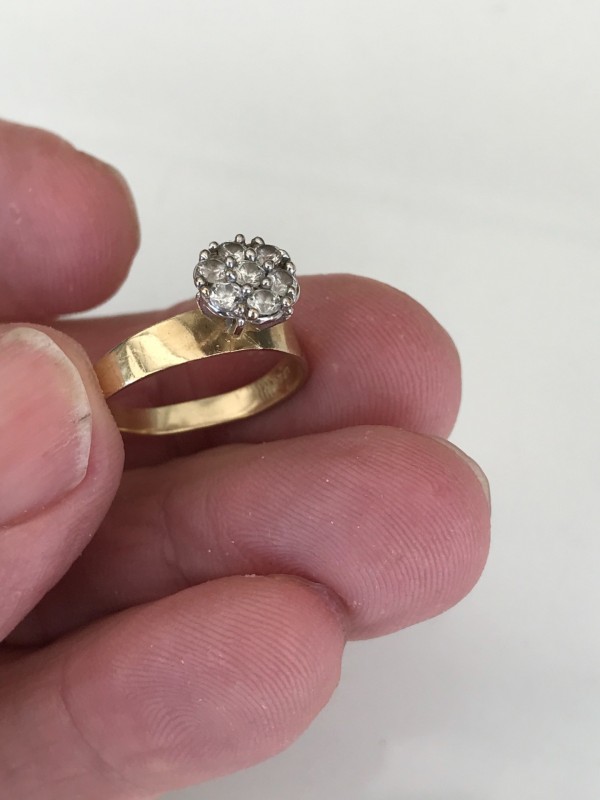


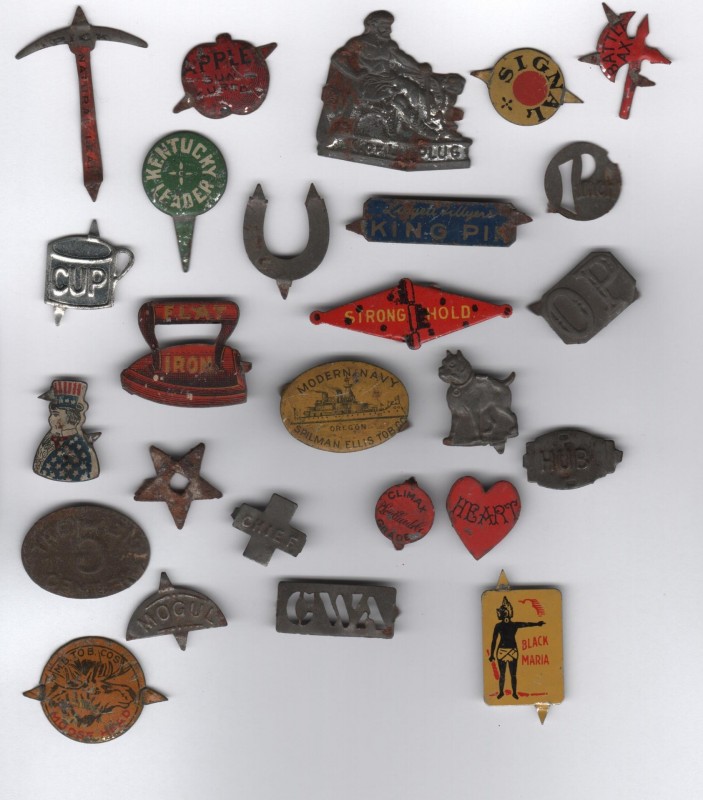
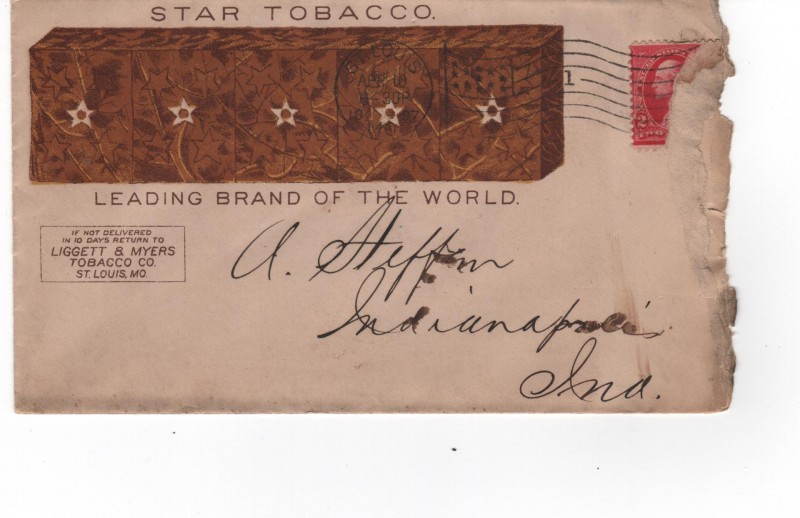


.thumb.jpg.008984156b596a0063f90b0d7fbc295b.jpg)
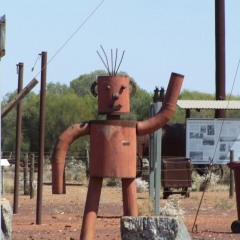

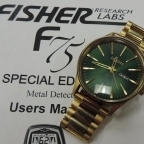

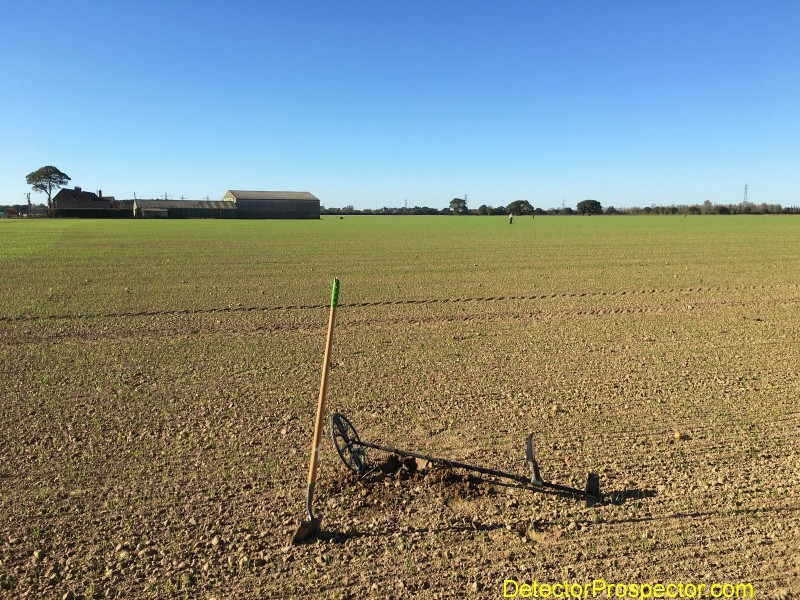
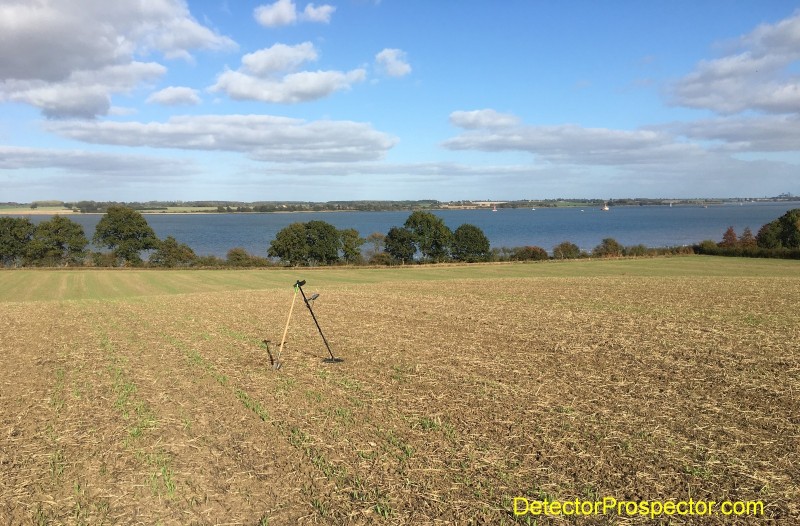
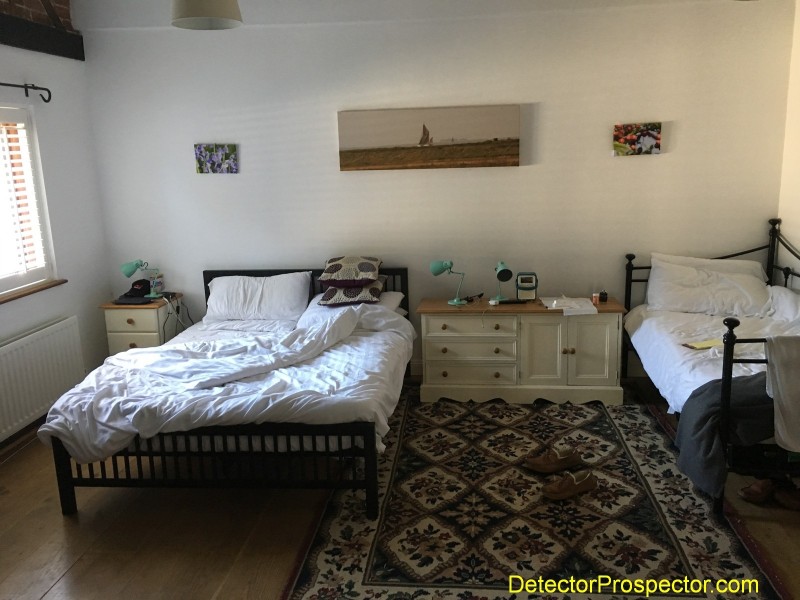

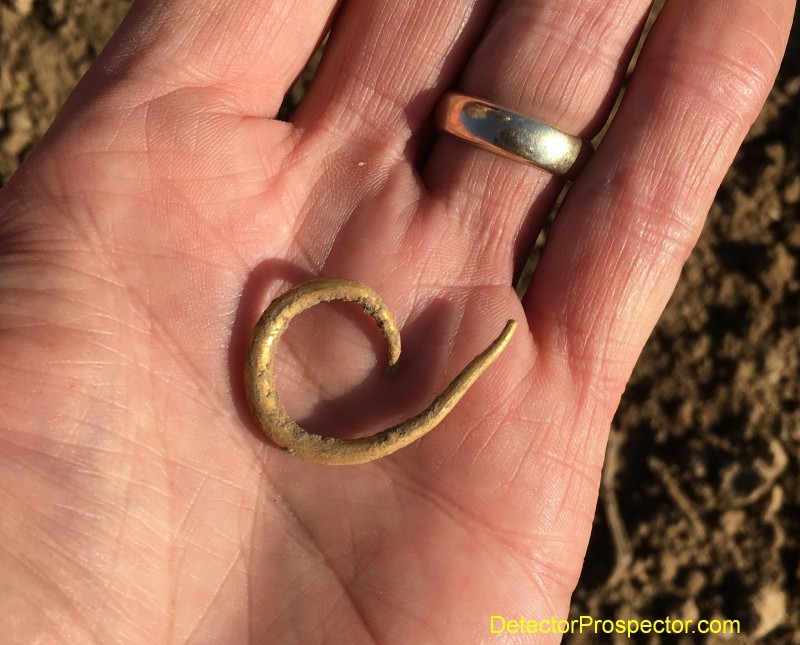
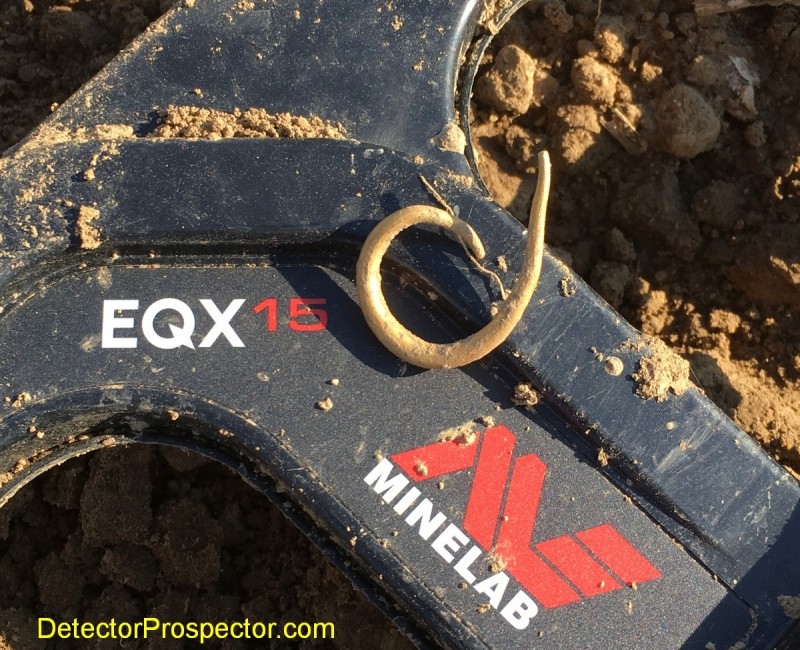
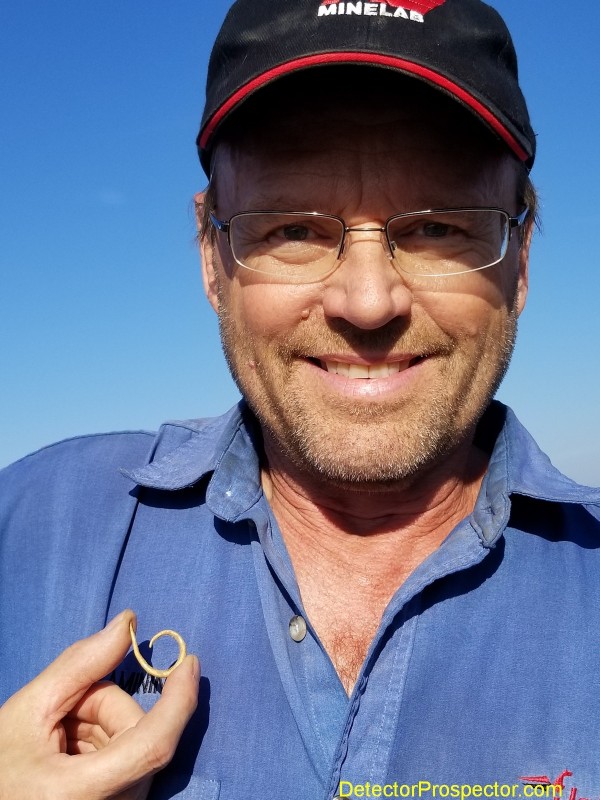
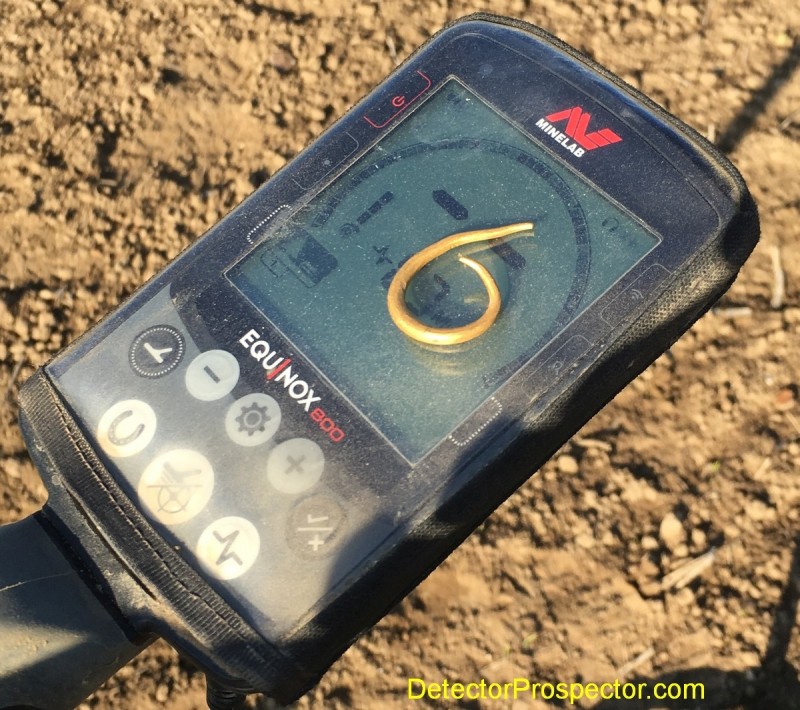
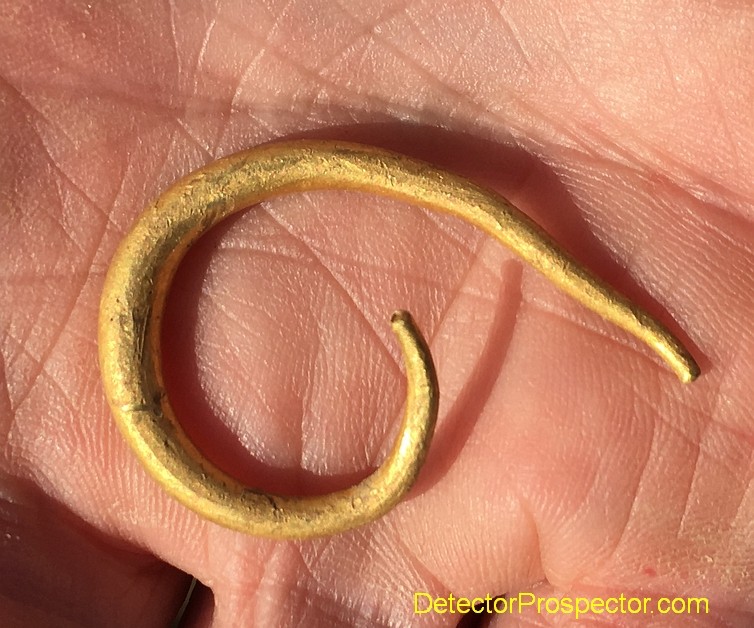
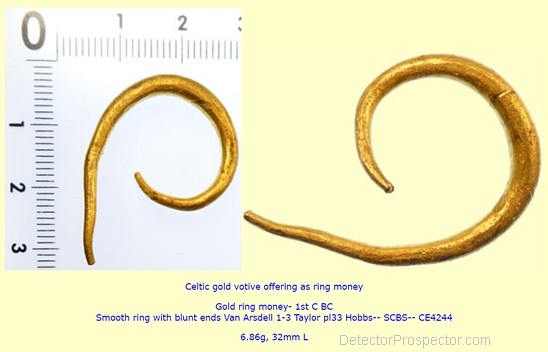
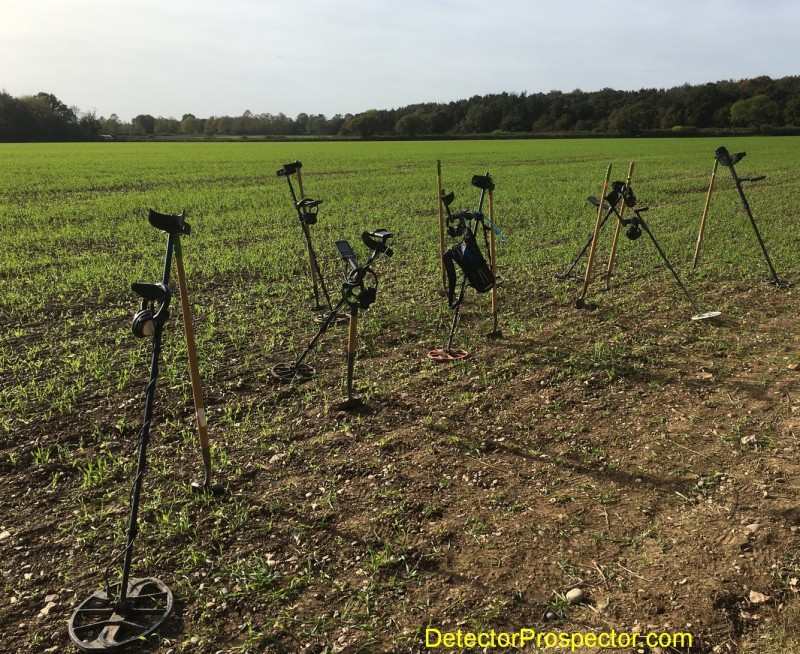

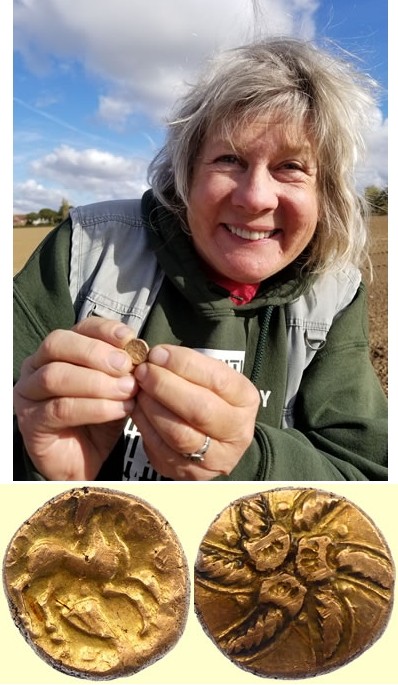
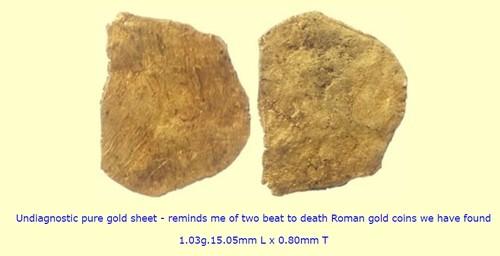
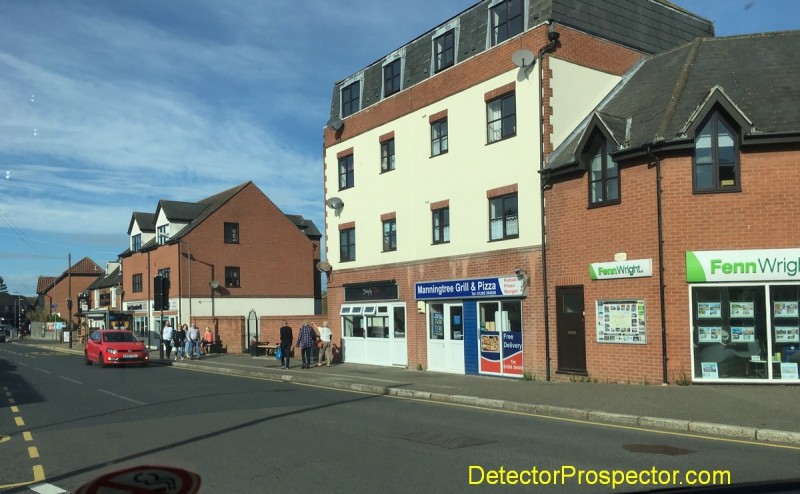
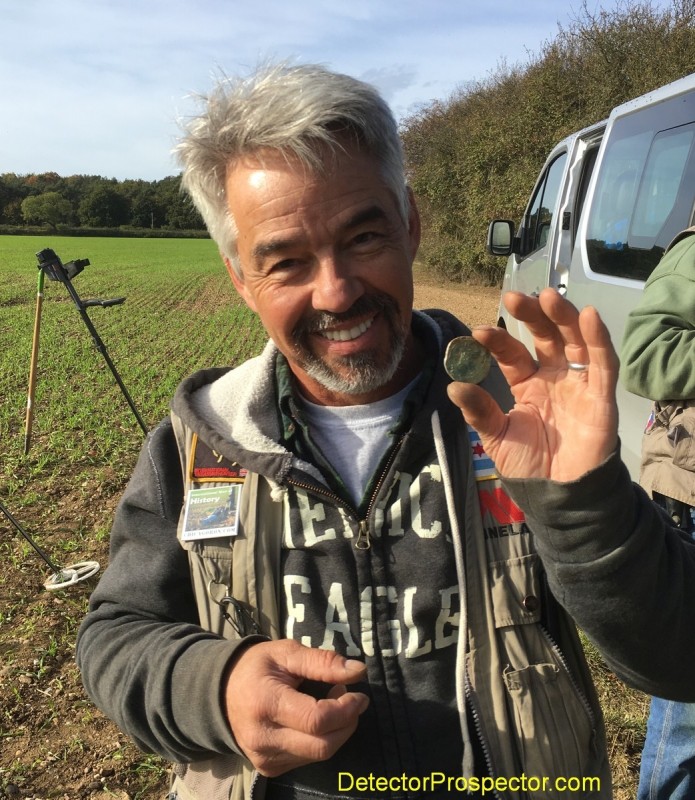
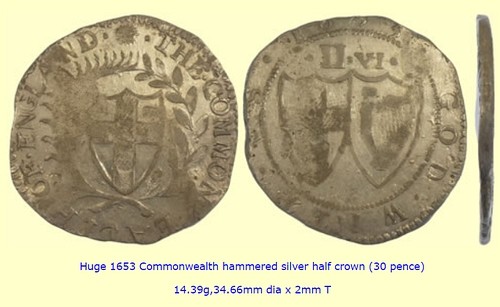
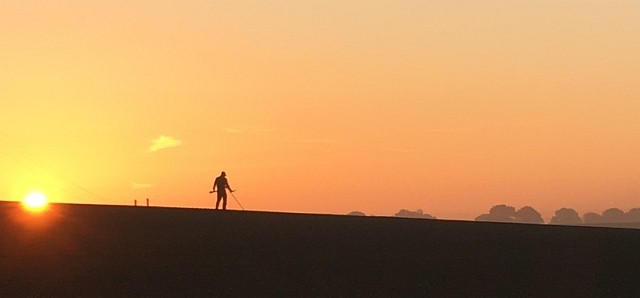
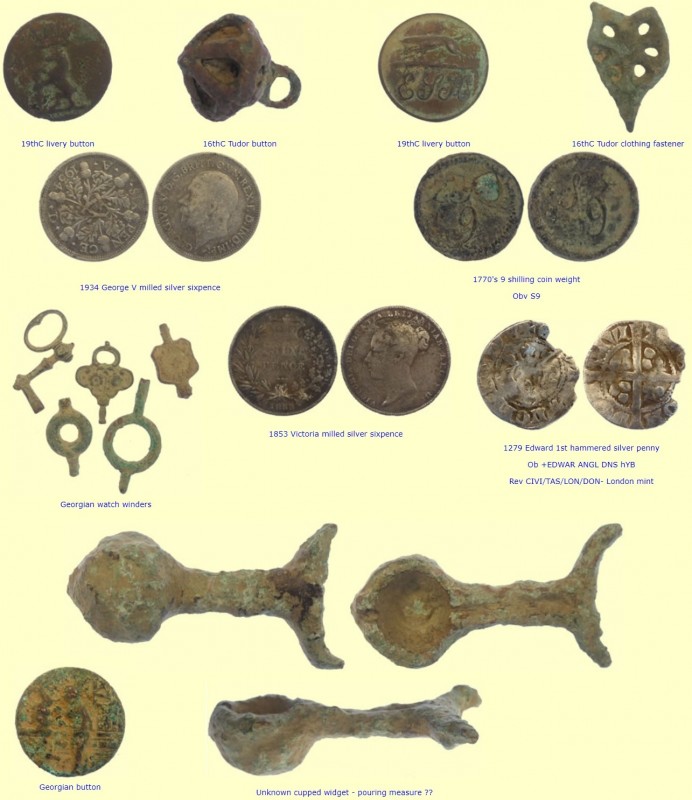
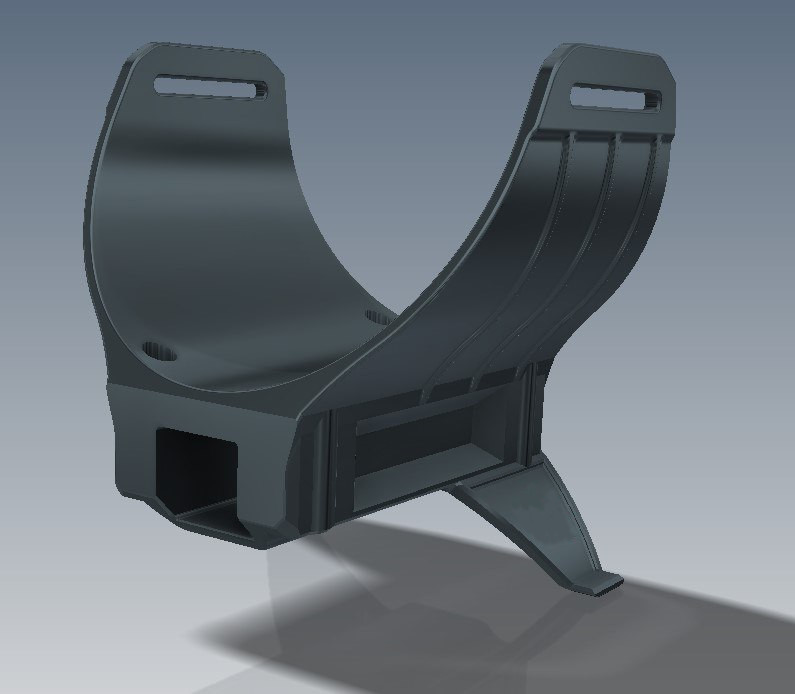
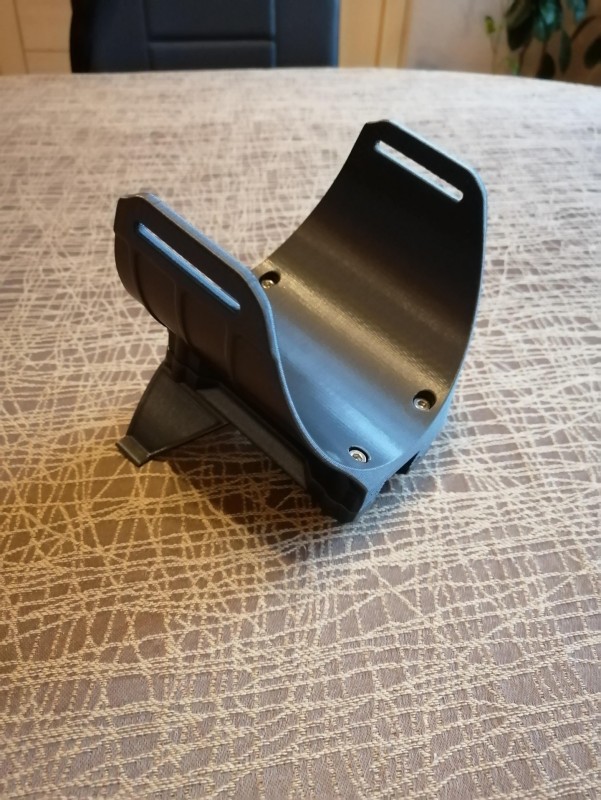
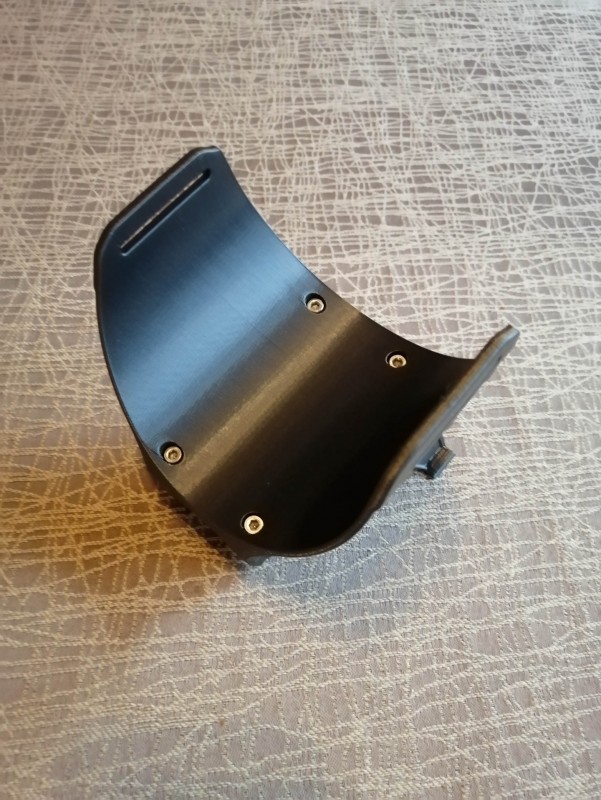
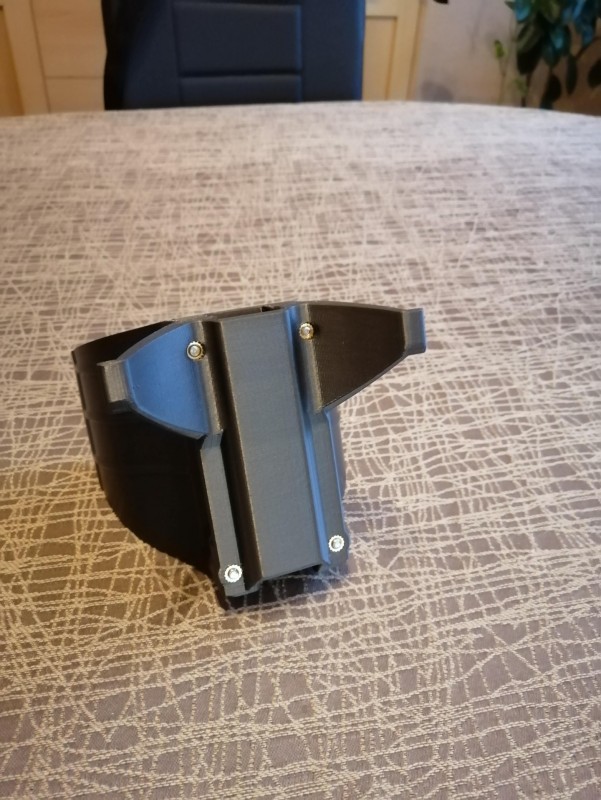
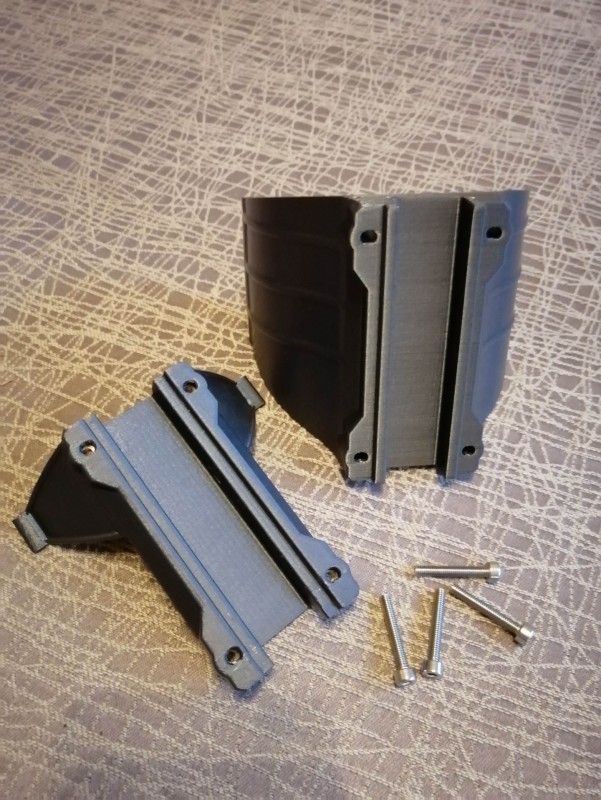



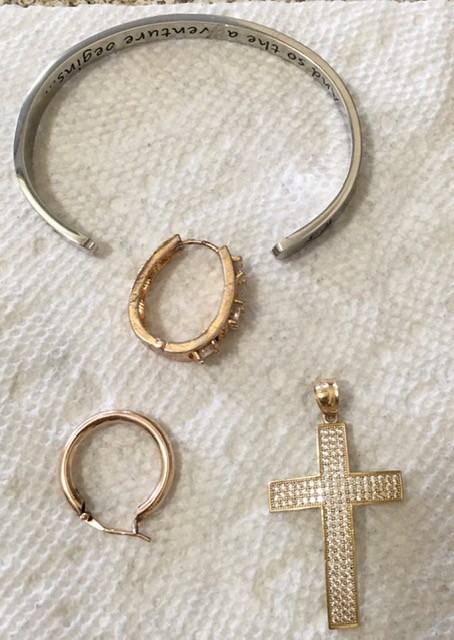

.thumb.jpg.a9604472c3cce6d83a8d8fcc887e33bc.jpg)
.thumb.jpg.2d8f404f00898550555d85ea40872e86.jpg)
